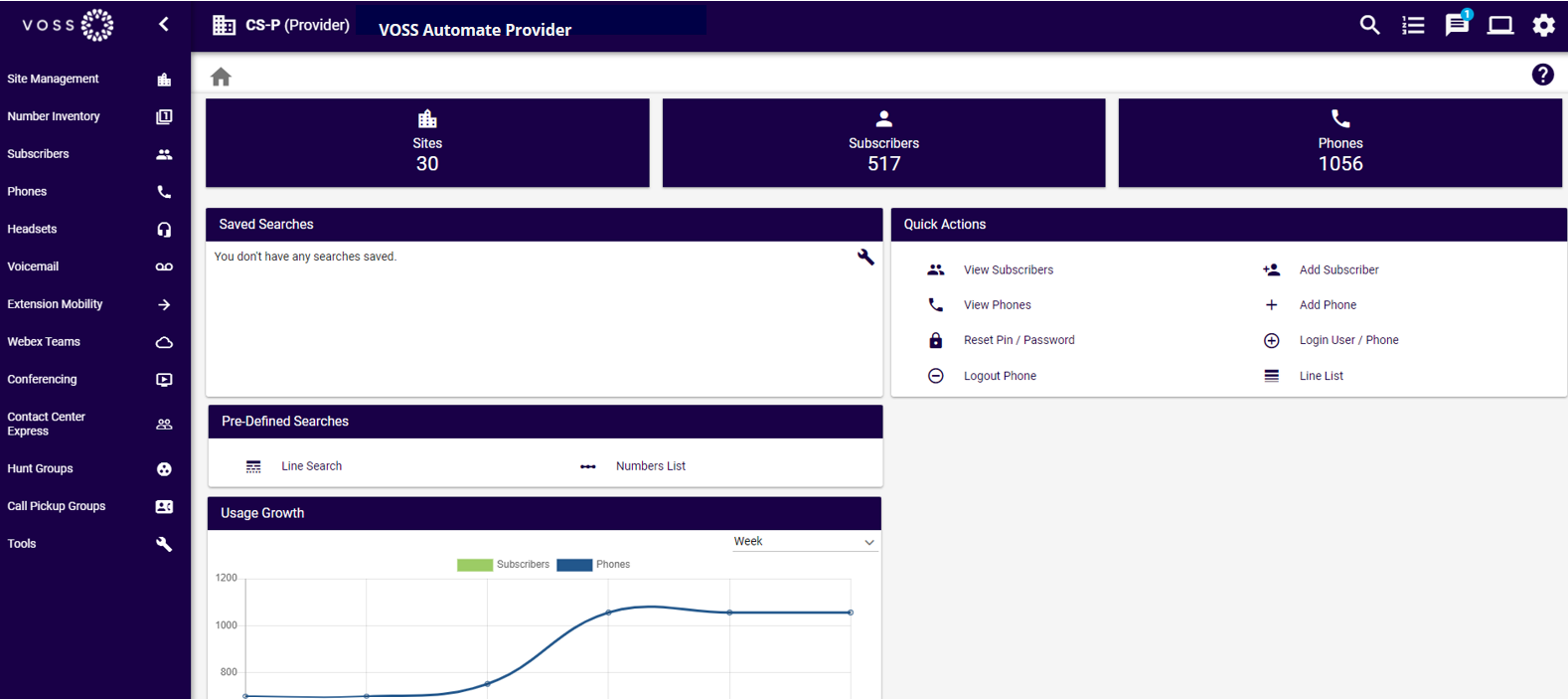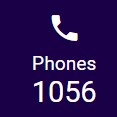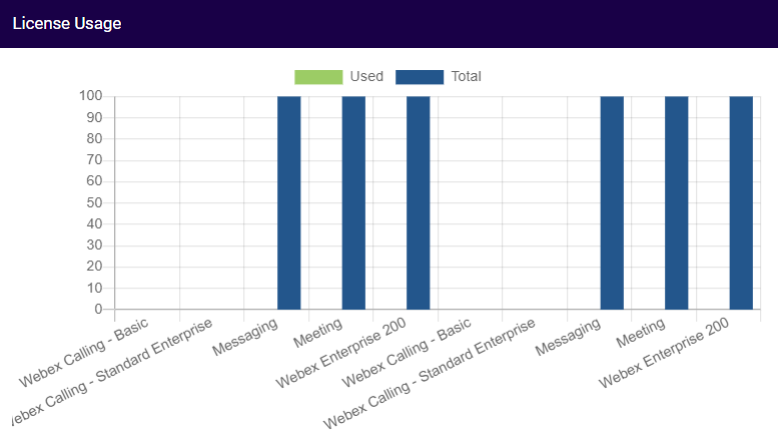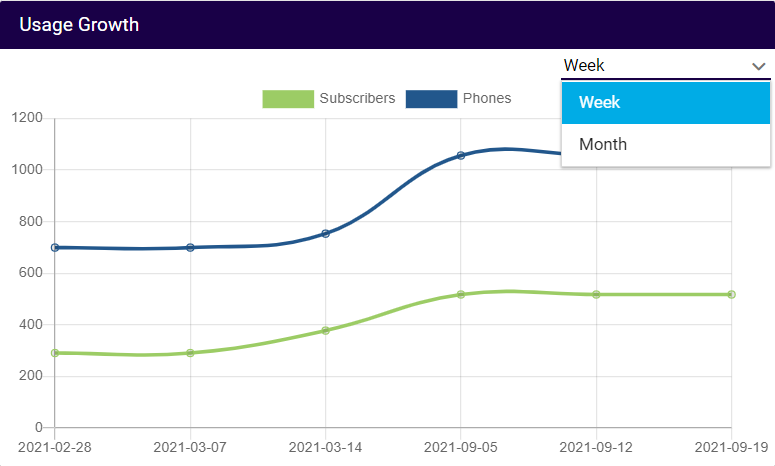Administrator User Interface¶
The Business Administration Portal (BAP) interface menus and functionality is defined as an interface type in VOSS Automate, along with the required role-based access.
Note
The menus, features, and functionality described in this topic is based on the default interface type shipped with the VOSS Automate product. Your system administrator may have customized a Business Admin Portal custom interface for your organization. The look and feel, and the availability of features and dashboards, is defined via the interface type selected for your access role, and field display policies.
Refer to the Core Feature Guide for details.
The main interface is divided into three functional areas:
Toolbar
Menus
Dashboards (either the home page, service dashboard, menu landing page, or lists)

Toolbar¶
The table describes options on the Business Admin Portal toolbar:
Company brand and menu labels toggle |
Displays your company brand as well as a toggle switch to show (<) or hide (>)the side menu labels. |
Organization (hierarchy) selection |
Triggers a pop-up that allows you to navigate to a specific level in the organization, for example, to provider, customer, or site level, so that you can view and manage resources at that hierarchy. The hierarchy level you’re at remains visible at all times. For details, see Navigate Organizations. |
Search icon |
Opens the search dialog, where you can specify criteria to run a search. See Run a Search. |
Transaction log icon |
Opens the Transaction Log page, which lists the most recent transactions in your system. See: View Transactions. |
Messages icon |
Opens Messages, which lists recent notification messages and transactions, including last login details, and a link to the transaction log. |
Application mode icon |
Allows you to toggle between the VOSS Automate Admin Portal and the Business Admin Portal (provided you have access to both interfaces). |
Settings |
A drop-down menu providing access to the following:
|
Home icon |
Home button to go to the Business Admin Portal home page for your current hierarchy level. |
Navigation breadcrumb |
A navigation path adjacent to the Home button allows you to move to other areas of the system, based on your current location. For example, to go from an instance view (such as view subscriber) to a list of those instances (such as the subscriber list). |
Help |
Opens the system online help. |
Landing Pages¶
Selecting a menu in the left navigation opens the related menu landing page, with options for viewing and managing the service or feature.
The default landing pages provide the following types of features:
Counters |
Cards providing item counts relevant to the menu, for example, the number of sites, internal inventory, external inventory, lines, or subscribers. Clicking on a counter opens the list view for the item.
|
Quick Actions |
Links to the screens for viewing and managing a feature or service. Some quick action links, such as Delete, launch just a pop-up. If available, the View links (for example, view sites, view internal inventory) open the list views, allowing you to view and manage these items from the lists. |
Graphs and charts |
Visual display of data (if available), providing a quick view of metrics for the feature or service, for example, license usage information for the Webex App feature, at the current hierarchy.
Usage charts that illustrate time periods, for example Usage Growth, allow you to configure the chart to display in either weeks or months, using a drop-down located in the top right-hand corner of the chart.
|
Home page¶
When logging in to the Business Admin Portal, the Home page is the first page you see. The Home page provides a summary view of your entire system, and includes:
Counters |
Cards displaying the total number of sites, subscribers, and phones, at the current hierarchy level (for example, at customer or site level). Click on a counter to go to the relevant menu landing page. |
Quick Actions |
Links to common tasks, including:
|
Saved Searches |
Links to saved searches. |
MACDs Per Day |
A graph indicating the number of move, add, and delete transactions performed at the specified hierarchy, in the past week. Graphs display only when data is available. |
Notifications |
The following notification types display on the home page:
|
Related topics
Lists (working in the lists)



